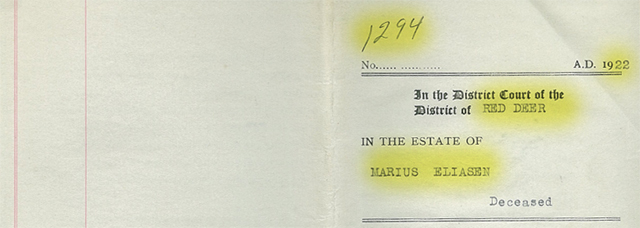Put side by side, the boxes containing court case files at the Provincial Archives of Alberta stretch for over five kilometres. Finding one specific file can be challenging. While you might know that you are looking for a specific person’s name and type of case, such as a civil, criminal, divorce or probate file, you can simplify your research process by answering these additional questions:
Alberta’s courts work in geographic regions known as judicial districts. Court cases are heard in the judicial district in which an event, such as lawsuit or criminal action, took place. From 1879 to the present day, these districts have been created, enlarged, reduced, and even eliminated in response to economic factors as well as population growth or decline. Narrowing the question down to a judicial district is a critical step in the research process.

From a single stipendiary magistrate serving thousands of settlers to a three-tiered system serving over two million people, Alberta’s courts have evolved over the decades. Within each judicial district, certain courts with specific functions have existed at different times in Alberta’s history, so understanding which court would have heard a particular case is critical to finding a specific file.

Each court maintained its own filing system, usually in a numerical order starting at case file (or docket) one. Where they exist, the PAA preserves the original indexes to these files created by the courts, often called procedure or docket books, which list the cases in numerical order and have alphabetical indices. Where procedure or docket books do not exist, the PAA is working to create electronic finding aids that can be searched by name as well as case file number. You may have to go to the original courthouse to get a docket or case file number.
